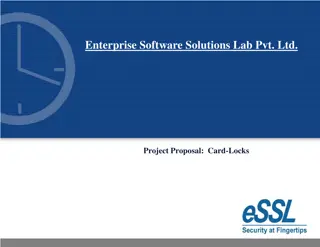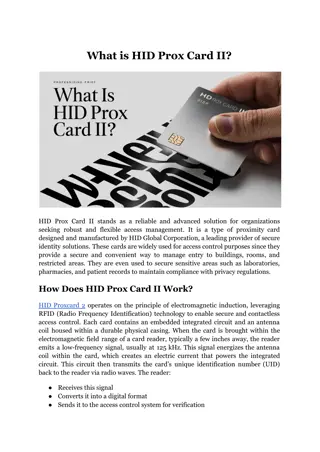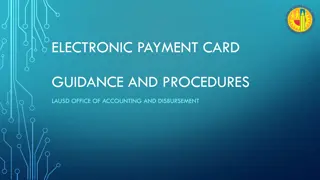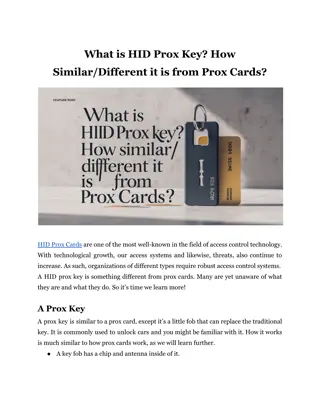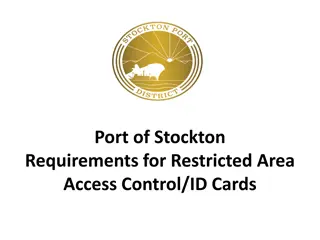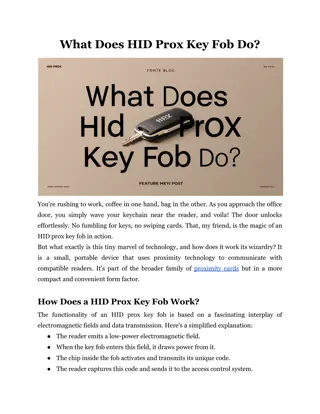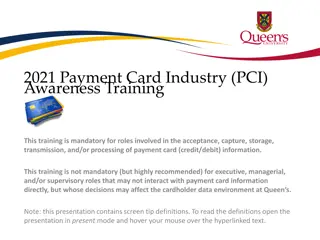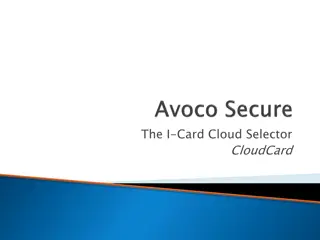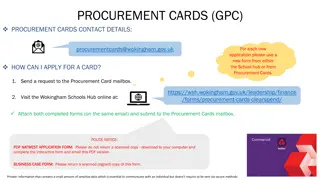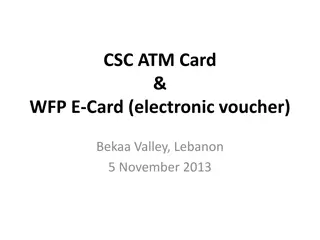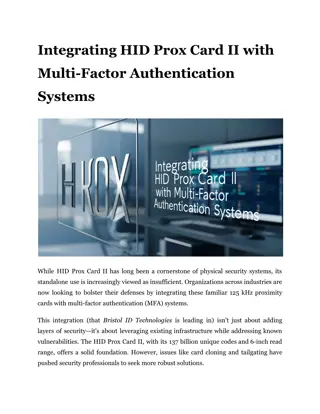
What is a Prox Card?
Learn what a prox card is, how it works, and its benefits for secure access control in businesses and organizations.n
Download Presentation

Please find below an Image/Link to download the presentation.
The content on the website is provided AS IS for your information and personal use only. It may not be sold, licensed, or shared on other websites without obtaining consent from the author. If you encounter any issues during the download, it is possible that the publisher has removed the file from their server.
You are allowed to download the files provided on this website for personal or commercial use, subject to the condition that they are used lawfully. All files are the property of their respective owners.
The content on the website is provided AS IS for your information and personal use only. It may not be sold, licensed, or shared on other websites without obtaining consent from the author.
E N D
Presentation Transcript
What is a Prox Card? A prox card, short for proximity card, is a contactless smart card used for secure access control and identification purposes. These cards have revolutionized the way businesses, institutions, and organizations manage security and access to their premises. Prox cards operate using radio frequency identification (RFID) technology, which enables users to gain entry to restricted areas simply by holding the card near a reader device. The beauty of prox cards lies in their simplicity and versatility. Unlike traditional keys or magnetic stripe cards, prox cards don't require physical contact with a reader. From corporate offices to educational institutions, healthcare facilities to government buildings, these small yet powerful devices play a significant role in: Safeguarding assets Protecting sensitive information Streamlining access management processes
History and Development The concept of proxy cards emerged in the 1970s when a lot of proximity card vendors became recognizable, but it wasn't until the 1990s that they gained widespread adoption. The technology behind them was developed as an improvement over traditional magnetic stripe cards, offering enhanced security and convenience. 1970s: Early development of RFID technology 1990s: Widespread adoption of prox cards in access control systems 2000s: Integration with other technologies like biometrics and mobile devices Read More Articles: Is HID 125kHz better than 13.56 MHz? How Prox Cards Work? They contain an embedded antenna and a small microchip. When the card is brought within range of a compatible reader, the reader emits a low-power radio frequency field that activates the card. The card then transmits its unique identification number to the reader, which verifies the information and grants or denies access accordingly. Key Components: Antenna: Receives and transmits radio signals Microchip: Stores the card's unique identification number Plastic casing: Protects the internal components The reading range of HID proximity cards typically varies from a few inches to several feet, depending on the specific technology used and the power of the reader. Types of Proximity Cards There are several types of proximity cards available, each with its own characteristics and applications:
Low-Frequency (LF) Cards: These operate at 125 kHz and are the most common type of prox cards. They have a shorter read range but are less expensive. High-Frequency (HF) Cards: Operating at 13.56 MHz, these cards offer improved security and can store more data. They are often used in multi-application scenarios. Ultra-High Frequency (UHF) Cards: With a frequency of 860-960 MHz, these cards have the longest read range and are typically used in logistics and supply chain management. Dual-Frequency Cards: These combine two different frequencies in a single card, offering versatility and compatibility with various systems. Advantages of Prox Cards They offer several advantages over traditional access control methods: Convenience: Users can quickly gain access without physically inserting a card or key Durability: With no moving parts, prox cards are less prone to wear and tear Security: Encrypted communication between card and reader enhances security Versatility: Can be used for multiple applications beyond access control Cost-effective: Long lifespan and low maintenance requirements Applications Their versatility has led to their adoption in various industries and applications: Corporate Access Control: Many businesses use an HID prox card to secure their premises and restrict access to certain areas within their facilities. Educational Institutions: Schools and universities employ prox cards for student and staff identification, access to buildings, and payment systems. Healthcare Facilities: Hospitals use prox cards to control access to sensitive areas and track equipment.
Hospitality Industry: Hotels utilize prox cards as room keys and for access to amenities. Public Transportation: Some transit systems use prox cards for ticketing and fare collection. Time and Attendance Systems: Prox cards can be used to accurately track employee work hours. Read More Articles: What is an HID Proximity Card? Security Considerations While HID proximity cards offer enhanced security compared to traditional keys or magnetic stripe cards, they are not immune to vulnerabilities. Some potential security issues include: Cloning: Sophisticated attackers may attempt to clone prox cards Eavesdropping: Intercepting the communication between card and reader Replay attacks: Capturing and replaying valid card data To mitigate these risks, many organizations implement additional security measures such as: Encryption: Using advanced encryption algorithms to protect card data Multi-factor authentication: Combining prox cards with PINs or biometrics Regular security audits: Monitoring and updating access control systems Proxy Cards Trends The field of access control technology continues to evolve, with several trends shaping the future of prox cards: Integration with Mobile Devices: Smartphones are increasingly being used as virtual prox cards. Biometric Integration: Combining prox card technology with fingerprint or facial recognition for enhanced security.
Internet of Things (IoT) Integration: Connecting access control systems to other smart building technologies. Improved Encryption: Developing more sophisticated encryption methods to counter emerging security threats. Sustainable Materials: Using eco-friendly materials in card production to reduce environmental impact. The Final Thoughts Prox cards have become an integral part of modern access control and identification systems. Their convenience, versatility, and security features have made them indispensable in various industries. As technology continues to advance, we can expect prox cards to evolve, offering even greater functionality and security in the future. Upgrade your access control and identification systems with Bristol ID Technologies! As one of the top proximity card vendors in card manufacturing and personalization, we offer cutting-edge prox card solutions tailored to your specific needs. Our state-of-the-art production facilities ensure the highest quality and security standards for your cards. Visit our website or call us now to speak with one of our knowledgeable representatives! Site Article: What is a Prox Card?



![Guardians of Collection Enhancing Your Trading Card Experience with the Explorer Sleeve Bundle [4-pack]](/thumb/3698/guardians-of-collection-enhancing-your-trading-card-experience-with-the-explorer-sleeve-bundle-4-pack.jpg)
